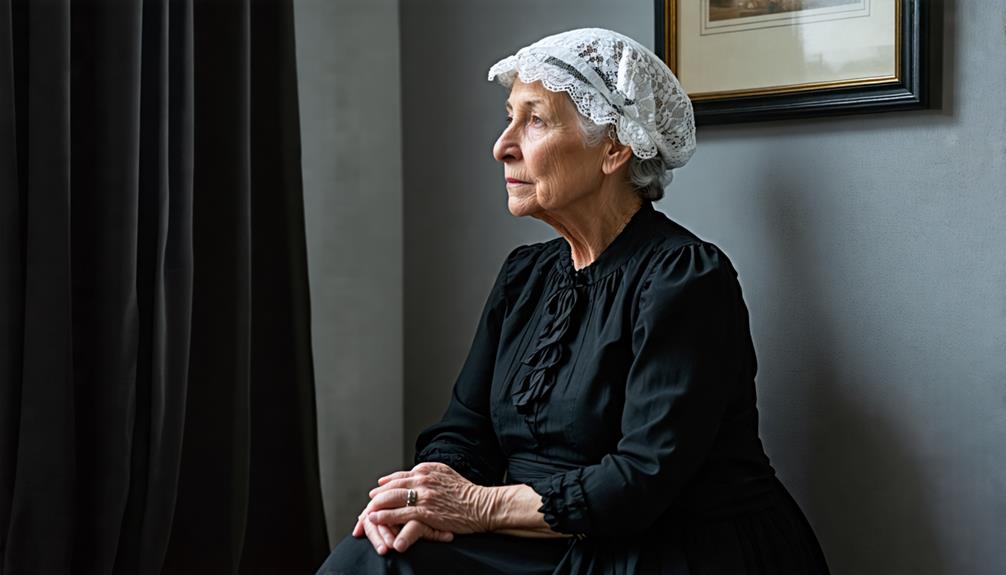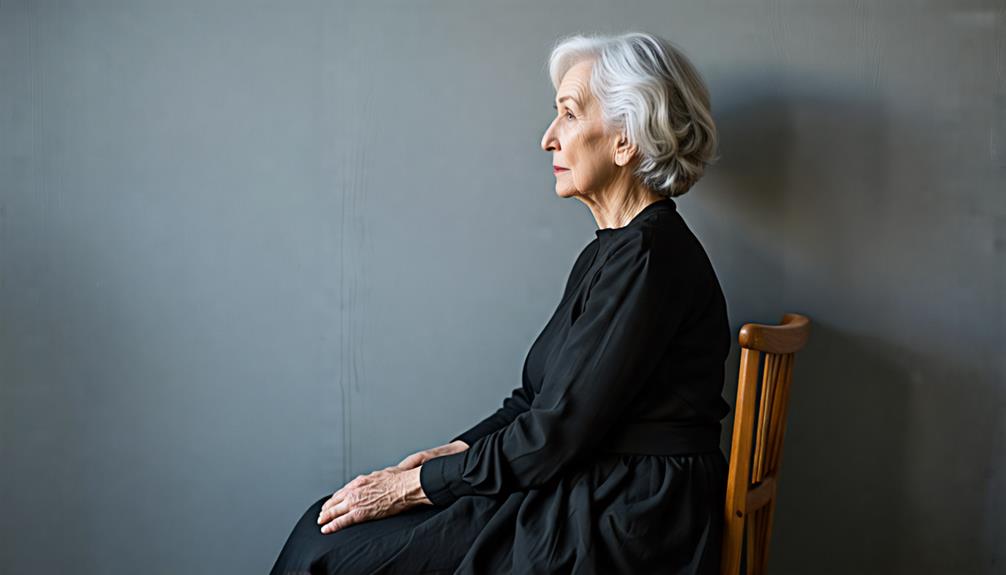You've likely seen James McNeill Whistler's iconic painting of his mother, but did you know it wasn't his original plan? When Whistler's intended model failed to show up, he turned to his mother as a substitute. This spontaneous decision led to the creation of one of the most recognizable works in art history. The painting's somber tones and contemplative atmosphere have captivated viewers for generations. But there's more to this accidental masterpiece than meets the eye. The story behind its creation offers insights into Whistler's artistic philosophy and the changing landscape of portraiture in the 19th century.
Key Takeaways
- Whistler's original model failed to appear, leading to a last-minute substitution with his mother.
- Anna McNeill Whistler posed instead, resulting in the iconic painting "Whistler's Mother."
- The unexpected change showcased Whistler's adaptability and commitment to spontaneity in art.
- The painting, completed in three months, became a symbol of motherhood and a cultural icon.
The Accidental Masterpiece

How did a painter's last-minute substitution lead to one of the world's most recognizable artworks?
When James McNeill Whistler's original model failed to appear, he turned to his 67-year-old mother, Anna McNeill Whistler, to pose instead. This unexpected turn of events resulted in the creation of 'Arrangement in Gray and Black No. 1,' better known as 'Whistler's Mother.'
Completed in just three months, this accidental masterpiece challenged traditional portraiture. Whistler focused on exploring color and composition, using a somber palette of grays and blacks. The painting depicts Anna in a black mourning dress, capturing themes of motherhood and aging.
Initially controversial when exhibited at the Royal Academy of Arts in 1872, 'Whistler's Mother' gradually gained recognition as one of the most famous paintings worldwide. This unplanned creation demonstrates how unexpected circumstances can lead to significant artistic achievements.
Artistic Philosophy in Action
Whistler's unexpected decision to paint his mother vividly demonstrates his artistic philosophy in action, showcasing his commitment to spontaneity and aesthetic exploration.
You can see his 'art for art's sake' approach come to life as he transforms a last-minute change into a significant exploration of form and color.
The painting's somber tones of grays and blacks highlight Whistler's innovative use of color to evoke emotion, emphasizing his belief that art should focus on aesthetic values rather than strict realism.
Legacy of Whistler's Mother

Few paintings have achieved the iconic status and enduring cultural impact of 'Whistler's Mother.'
James McNeill Whistler's 'Arrangement in Gray and Black No. 1' has become a symbol of maternal love and a cultural icon since its debut at the Royal Academy in 1872. Despite initial criticism, the painting gained international recognition, becoming the first American artwork acquired by the French state in 1891.
You'll find its influence extended through the Great Depression, when a U.S. tour attracted over a million visitors in Chicago alone.
Today, Whistler's masterpiece continues to captivate audiences, with its current exhibition at the Philadelphia Museum of Art.
The painting's legacy is a demonstration of its enduring appeal, often called the Victorian Mona Lisa. Its continual relocation and display in prestigious museums worldwide solidify its place in art history.
Conclusion
You've seen how a chance occurrence can lead to artistic greatness.
Whistler's flexibility and vision transformed a potential setback into an iconic masterpiece.
Remember, inspiration can strike from unexpected sources.
Next time you're faced with a change of plans, consider it an opportunity. Who knows? Your adaptability might result in something extraordinary.
Whistler's Mother stands as a tribute to the power of seizing the moment and finding beauty in life's surprises.

Leave a Reply